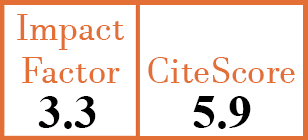Full Papers
Peritenon extensor tendon inflammation at metacarpophalangeal joints level: a valuable ultrasound finding in the differential diagnosis between psoriatic arthritis and rheumatoid arthritis?
T. Okano1, M. Di Carlo2, F. Salaffi3, E. Filippucci4
- Center for Senile Degenerative Disorders (CSDD), Osaka Metropolitan University Graduate School of Medicine, Osaka, Japan.
- Rheumatology Unit, Università Politecnica delle Marche, Ospedale Carlo Urbani, Jesi, Italy. dica.marco@yahoo.it
- Rheumatology Unit, Università Politecnica delle Marche, Ospedale Carlo Urbani, Jesi, Italy.
- Rheumatology Unit, Università Politecnica delle Marche, Ospedale Carlo Urbani, Jesi, Italy.
CER18458
2025 Vol.43, N°7
PI 1313, PF 1320
Full Papers
Free to view
(click on article PDF icon to read the article)
PMID: 40470548 [PubMed]
Received: 19/12/2024
Accepted : 06/03/2025
In Press: 31/05/2025
Published: 09/07/2025
Abstract
OBJECTIVES:
Ultrasound (US) detection of peritenon extensor tendon inflammation (PTI) was found highly specific for spondyloarthropathies (SpA), including psoriatic arthritis (PsA). However, this finding has not been extensively investigated. This study aimed to investigate the value of PTI at metacarpophalangeal (MCP) joint level in the differential diagnosis between rheumatoid arthritis (RA) and PsA, and analyse the differences between early (less than 1 year of disease duration) and established (more than 1 year of disease duration) disease groups.
METHODS:
Consecutive RA and PsA patients with clinical involvement of at least one MCP joint were enrolled. The 2nd to the 5th MCP joints of both hands were scanned on the dorsal aspect to detect intra-articular and peri-tendinous inflammatory findings using both B-mode and power Doppler (PD) mode.
RESULTS:
The study included a total of 69 patients, 37 patients with RA and 32 patients with PsA. PTI was found in a significantly higher number of patients with PsA rather than in RA patients. Conversely, there was no statistical difference in terms of PTI prevalence between RA and PsA patients in the early disease groups. On the other hand, no statistically significant difference was found in terms of synovitis prevalence between RA and PsA patients.
CONCLUSIONS:
PTI was found more frequently in PsA rather than in RA patients. Nevertheless, since no statistically significant difference was found between RA and PsA patients with less than 1 year of disease duration, PTI may represent an inflammatory feature of the early phases of both the diseases.


